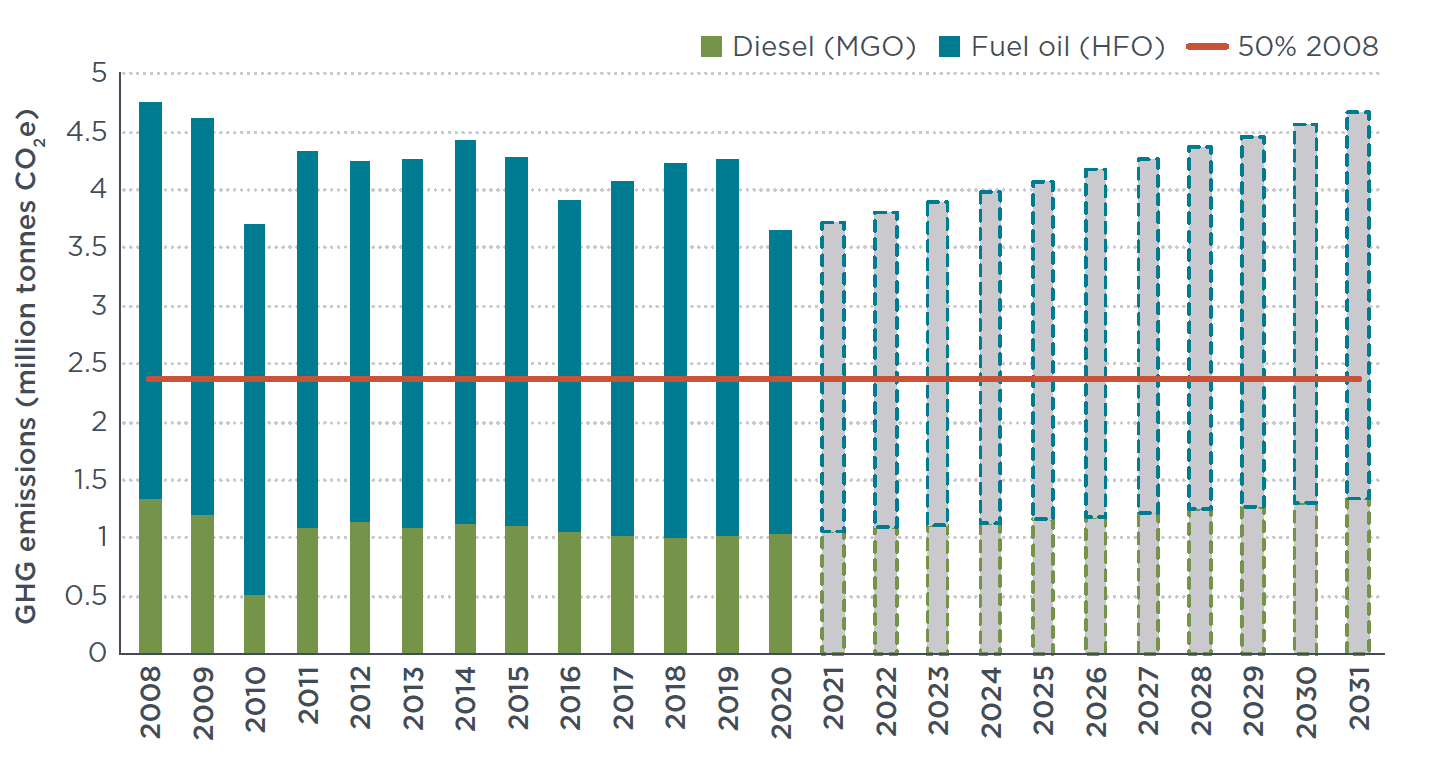Truck eco-driving programs: Current status in Latin America and international best practices
Working Paper
Brazilian coastal shipping: New prospects for growth with decarbonization
In 2020, Brazil’s federal government created a project called BR do Mar that focuses on incentivizing cabotage transport (coastal shipping); it was recently approved into federal law. The project aims to (i) promote greater balance in the transport matrix, which is heavily focused on road transport; (ii) reduce cabotage transportation costs and bureaucracy; (iii) increase chartering possibilities and vessel supply and (iv) encourage market competition. BR do Mar is expected to lead to a 40% increase in the cabotage fleet in three years and a 65% increase in the amount of cargo transported by containers.
This study identifies opportunities in Brazil’s new regulatory framework for expanding coastal shipping while contributing to the decarbonization goals of the global shipping sector. Shifting a portion of cargo transport from trucks to ships—which the new law is likely to promote—would reduce GHG emissions at the national level, but unless coastal shipping decarbonizes, it will increase cabotage-sector GHG emissions and air pollution in coastal areas by 28% between 2020 to 2031, the study estimates. While cabotage currently represents only 3% of Brazil’s transport-related GHG emissions, the projected increase in cabotage emissions would put Brazil’s national maritime transport sector out of step with broader international decarbonization targets set by the International Maritime Organization, where Brazil is a prominent member state. To ensure that an increase in cabotage does not increase shipping emissions, Brazil should consider government policies to encourage the use of low and zero life-cycle emission fuels, as well as on-shore power.
Given that national and international maritime transport share the same infrastructure and operational profile (in terms of ships, fuels, bunkering procedures, maintenance, and other dimensions) taking actions that help decarbonize Brazil’s shipping can support global decarbonization efforts. In this sense, the BR do Mar project represents an opportunity to develop efficient and clean maritime infrastructure in the country. The expected investments in maritime infrastructure that will be spurred by BR do Mar could be focused on developing bunkering facilities for alternative and low-emission fuels that have low or zero life-cycle emissions, building modern and efficient ships, and investing in cleaner port infrastructure, including shore power. This transition requires deep infrastructural changes that will not be achieved by private initiative only. Thus, government support is crucial for creating institutional and market conditions that provide an attractive environment for such investments.

Figure. Projected GHG emissions from cabotage in Brazil through 2031
